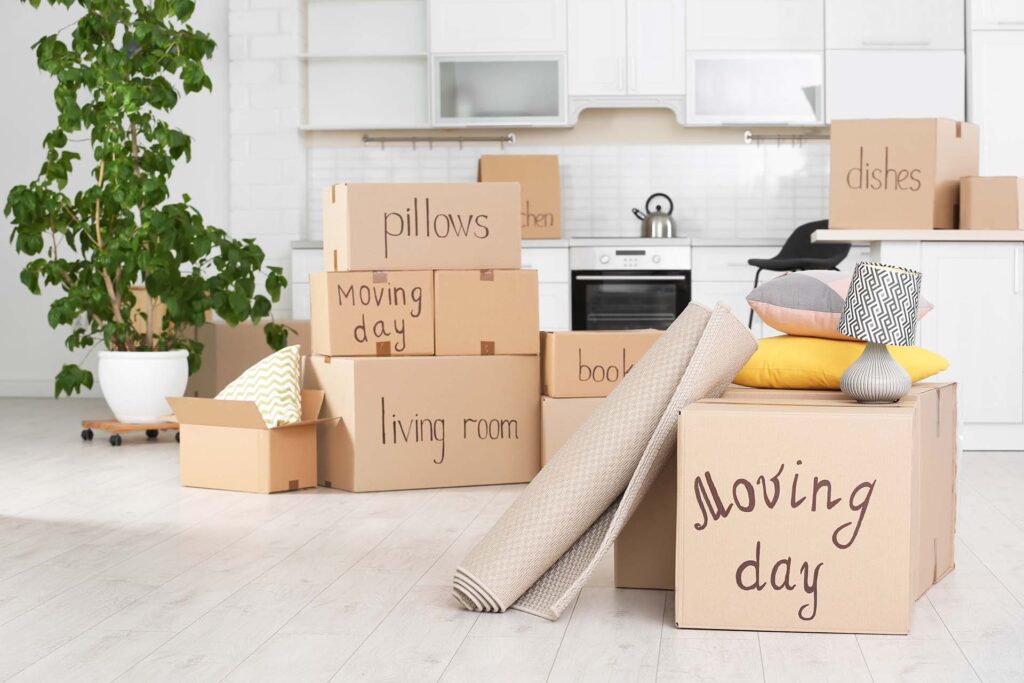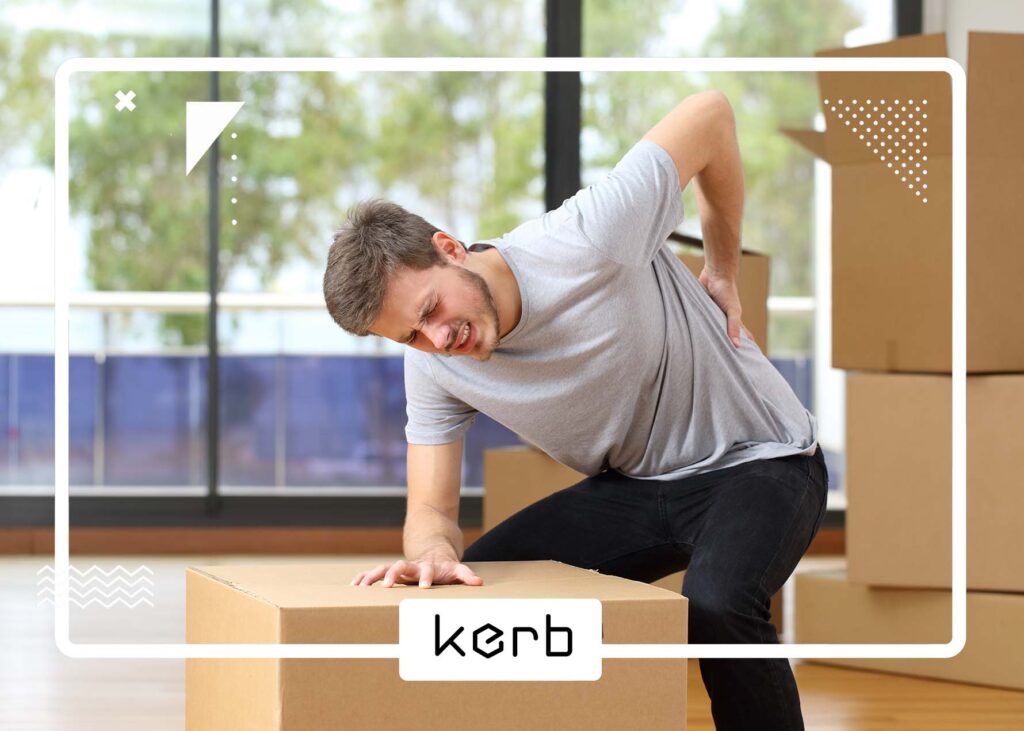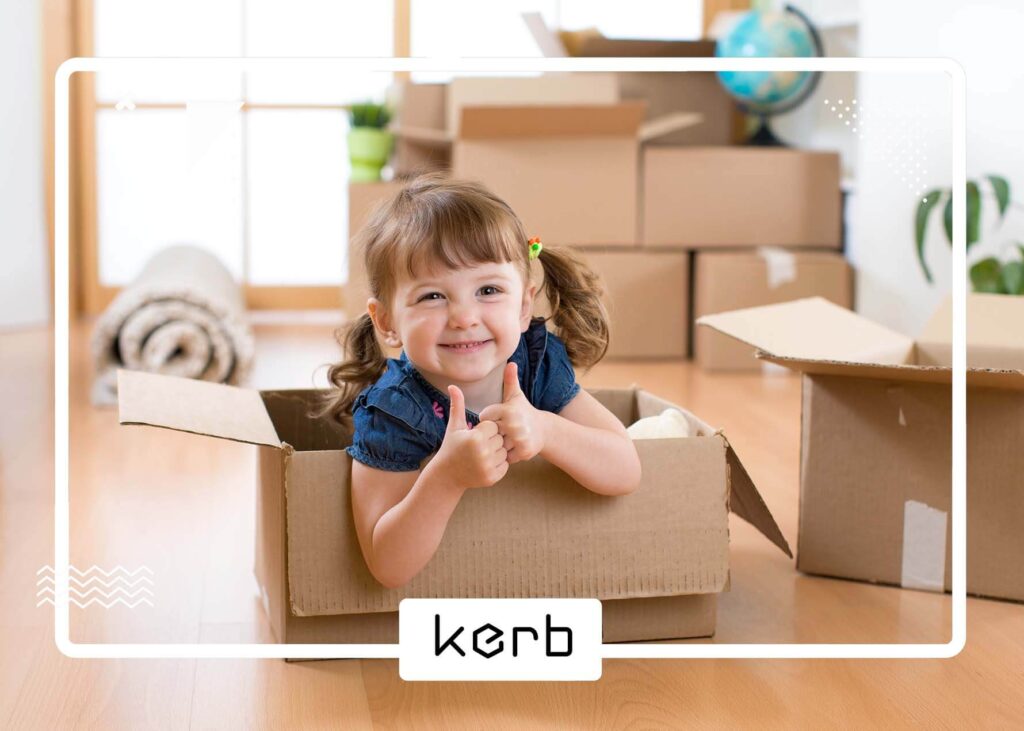The most demanding task on every relocation to-do list is undeniably related to boxing up large items. If you are wondering how to pack furniture, here is a short but effective guide to doing it properly and ensuring the safety of your belongings. After all, getting all pieces delivered whole to your next home is not that difficult.
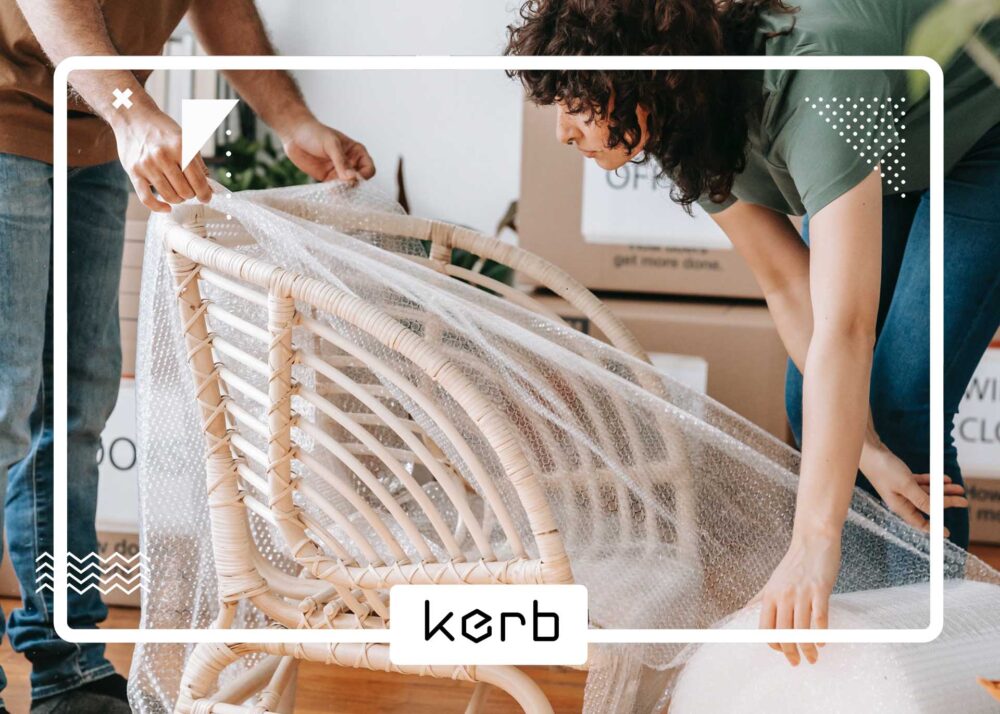
How to move a refrigerator? Is there any way to transport a china cabinet safely? If I box up a TV for relocating, will it be safe once I place it in the truck? When preparing to box up large items, you’ll inevitably be faced with many questions like these.
Even though it takes up the largest portion of the relocation expenses, relocating furniture is still a must if you’re moving into an unfurnished place. Another thing to include in the relocation budget is valuable pieces, antiques, or high-quality goods, which should definitely not be omitted from the packing list. Here are some of the most effective relocation tips that will help you box up any armchair, sofa, bookshelf, or anything similar when relocating to a new home.
How to Pack Furniture for Moving? Preparation Is the First Step to Take
Relocation of bulky objects can be pretty complicated, especially if you’re about to move from a house to an apartment, because smaller spaces usually mean you have to downsize for the move. Two most effective ways to get rid of stuff you won’t need in the new living space is to donate furniture or sell it with the house.
However, there is a lot of stuff you already own that is among the things you need for your first apartment. After you’ve decided what to keep, the very next step is to create a list of all things that could improve your future home and learn how to properly box them up.
Learn How to Prepare Furniture for Moving
Quality preparation is half the work done. Removing everything from cupboards, drawers, or nightstands is the very first step. Going through all the stuff and decluttering is the next one. You definitely don’t want to take useless trinkets to your new house.
After the decluttering is finished, clean all items you plan to take in detail. Vacuuming stuff to get rid of any dust, inspecting if all the stuff is whole and undamaged, and taking photos is something you shouldn’t skip.
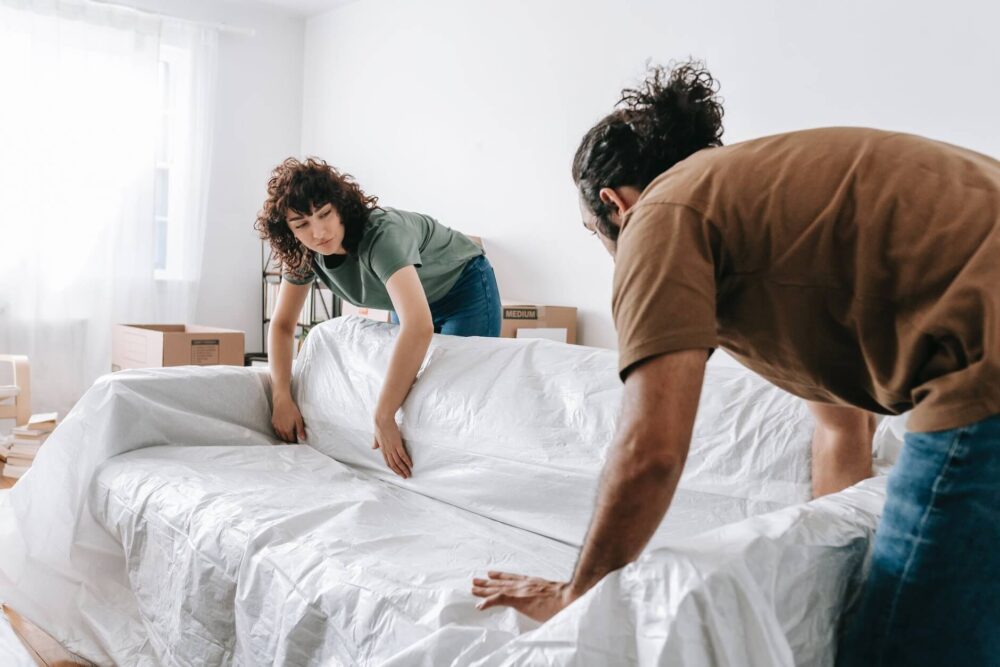
Get Protective Materials to Wrap the Pieces
After the cleaning is done, the very next step is to package all the stuff properly to prevent any potential damage during transport. But you won’t be able to do it before getting all the packing materials needed for boxing up. Here is how to protect furniture when moving and what to prepare before you start the packing process:
- Blankets are the perfect material for the coverage of all bulky stuff that might get scratched or torn. Sofas and armchairs are excellent examples.
- Foam padding is the right protective layer for all wooden pieces. This way, you’ll protect the surface and prevent any scratches. The best thing about it is that foam padding can’t be torn, which guarantees full protection of all wooden stuff.
- Corrugated cardboard sheets are the best solution to put between disassembled shelves or any kind of board. This will prevent them from rubbing against each other.
- Bubble wrap is always good to use when your aim is to protect parts made of glass.
- Plastic stretch is another layer of protection recommended to add after the bubble wrap, just to be sure everything is adequately protected.
- Zip plastic bags are great to put smaller parts like screws, bolts, and other similar things. (Don’t forget to label each bag, too).
- Duct tape is a must-have in this case because all the protective layers have to be set in place.
- A labeling kit is also necessary to use because you have to know where each item is packed. Getting the right type of protective materials is an essential thing to do. That’s why you should put this task high on your to-do list.
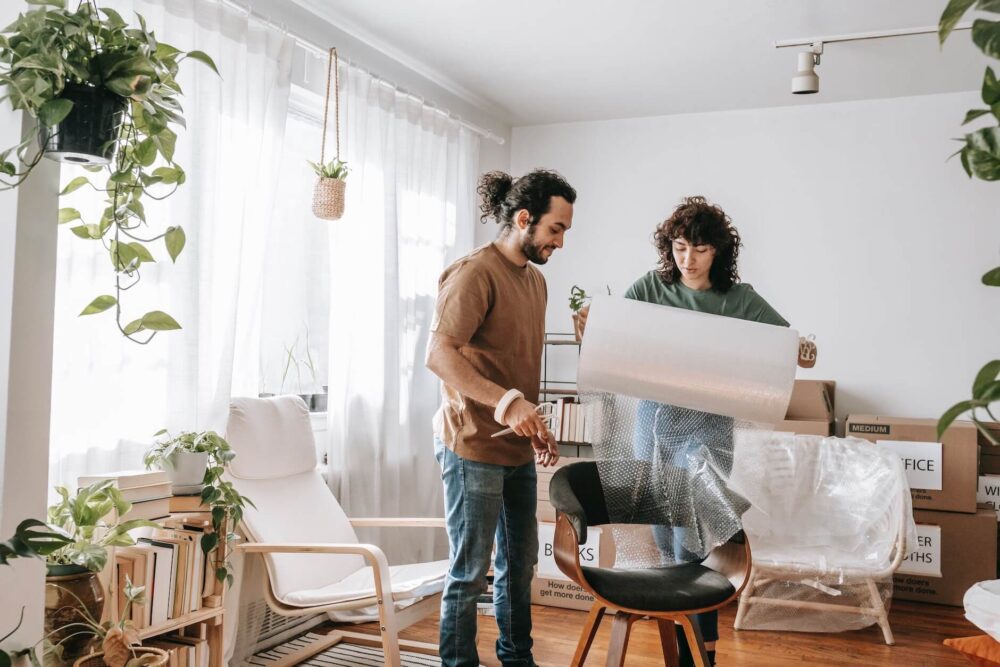
Disassemble the Each Piece and Label All Parts Correctly
Now that you have all your stuff clean and materials ready, you can finally start with some more complicated tasks, like disassembling the furnishings. Of course, before you start, you should have some basic tools like screwdrivers and wrenches. Keep your tool kit near you because disassembling can’t go without it.
Always Start With the Less Complex Items and Leave the Complicated Ones for the End
The best way to start with this process is with straightforward things like bookshelves. Because all you have to do in this case is to disassemble the boards.
After that, you can move on to tables, desks, armchairs, shoe cabinets, cupboards, drawers, beds, and the like. The last phase should be focused on bulky and more delicate stuff.
Here is what you should remove:
- All the shelves from closets,
- Glass tabletops,
- Glass cupboard doors,
- Bed frames,
- Table and armchair legs.
In case you don’t feel confident enough to deal with this but still want to take all the stuff with you, hire a cross-country moving company to do it for you.
Label All Parts and Boxes Properly, or You’ll Be Completely Lost When Reassembling Starts
Taking notes on the tiniest part you pull apart is essential for when the unpacking after relocating and reassembling starts. The last thing you want is to find yourself completely lost in mixed-up parts. That’s why every zip bag, board, hinge, or screw, has to be labeled.
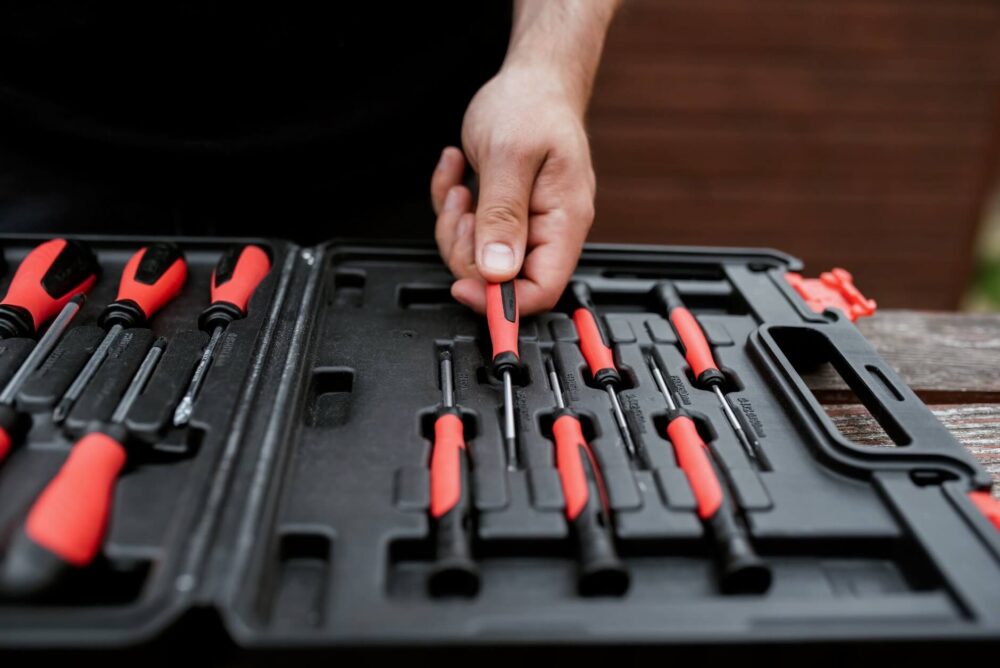
How Do You Pack Wood Furniture for Moving?
Wrapping furniture for moving implies choosing the right material for each thing. For example, wooden surfaces are pretty sensible to plastic or bubble wrap. That’s why using foam padding, or corrugated cardboard sheets is always a better choice.
Good to know: Don’t use bubble wrap when boxing up leather sofas or armchairs, because those materials are very delicate. Blankets are always the best choice for this purpose.
Wrap All Items Without Omitting Any Part
Make sure that every part of the object you’re wrapping is protected from each side and properly taped. Because in case any protective layers fall off, the object can easily get damaged. If you’re more of a visual learner and want to find more useful packing tips for relocating, check out the video below.
How Do You Pack Heavy Furniture That Can’t Be Disassembled?
Some stuff simply cannot be disassembled. That’s why you should know how to prepare it for relocation properly Using blankets, a lot of plastic wrap, and tape is the most effective packing technique that will help you keep items undamaged. The bigger problem comes with the question of how to move them through the house?
How to Move Stuff Through the House Without Damaging the Floors
Again, proper preparation is essential to get this task over with. Measuring the stuff to make sure it can easily fit through the door and clearing pathways are mandatory preparatory steps. Also, having a helping hand is another detail to cover, because there is no chance you’ll do everything on your own.
When it comes to heavy things, the best solution to move them efficiently around the house is to use additional tools to make the whole process significantly easier. Here is a list of tools to acquire:
- Sliders are the simplest solution to move your bulky stuff through the house without damaging the floors or having to carry them. This is also a very affordable solution and easily findable in any dollar store. Also, keep in mind that some sliders come with ropes, which will make the whole process even easier to handle.
- A four-wheeled dolly, along with the two-wheeled one, is a great solution to move heavy objects over long flat surfaces. For example, if you need to carry an item across the street, a dolly will be perfect for this purpose. They’re usually sturdy and can withstand a lot of weight.
- Lifting straps are another small investment that will make a big difference. These straps will allow you to lift heavy objects by distributing the weight of the load to stronger muscles and minimizing the chance of injury.
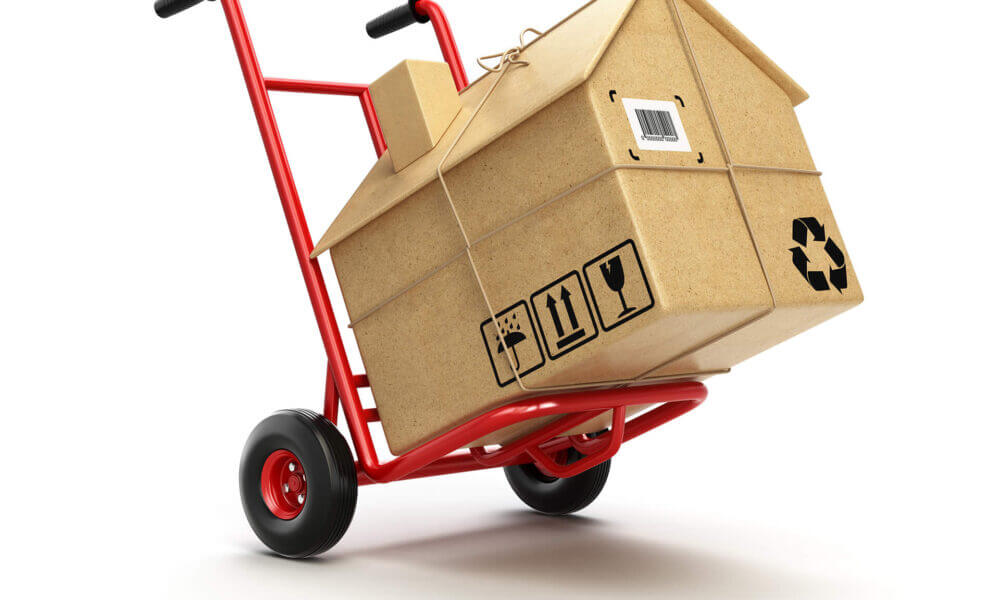
If Packing Furniture Is Not Your Specialty, Let Professional Cross-Country Movers Do It
The most convenient way to move your belongings is to entrust them to professional long-distance movers. When choosing cross-country moving services, keep in mind that packing services imply:
- Disassembling and reassembling of all large belongings,
- Protective materials,
- Necessary equipment,
- Loading and unloading from the truck.
Undeniably, using long-distance moving services is the easiest way to relocate. So make sure to ask a long-distance moving company for a video survey for an easier moving quote, which will provide a cost estimate within minutes.
What Is the Easiest Way to Transport Furniture?
Undeniably, the easiest way to transport stuff is with the help of professional long-distance movers, who will take care of the tiniest detail. Not only will they do everything when boxing up your belongings to keep them secure, but they will also load the moving truck properly, so everything will be placed in the right spot.
This way, the risk of damage during transport will be reduced to a minimum, and you’ll be provided with a stress-free relocation experience. The best thing of all is they have the answer to any question – from how do you pack furniture for cargo to how long does it take to package a house. In other words, if you opt for hiring movers, you’ll be guided professionally through the whole process.
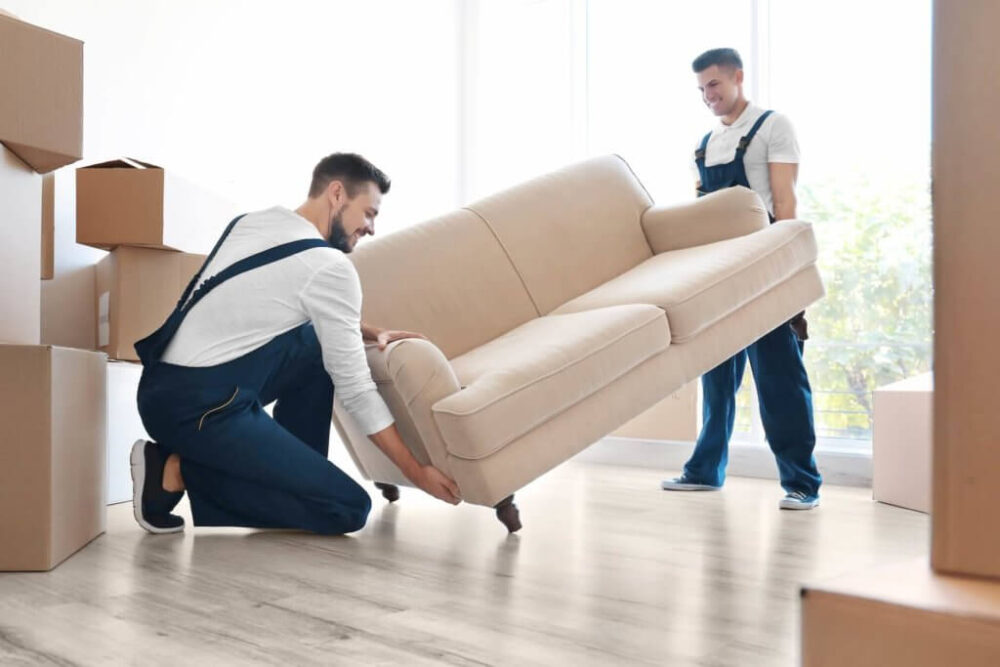
Are You Ready to Equip Your Very Next Home?
Now that you know how to secure your stuff and what the easiest way to move it is, there is no reason not to incorporate old furnishings into your next living space. Not only will they remind you of your old home, but the familiar environment will help you adjust to the different environment. So make a list of all the stuff you simply have to take with you, prepare everything in advance, and wait for long-distance movers to knock on your door.
